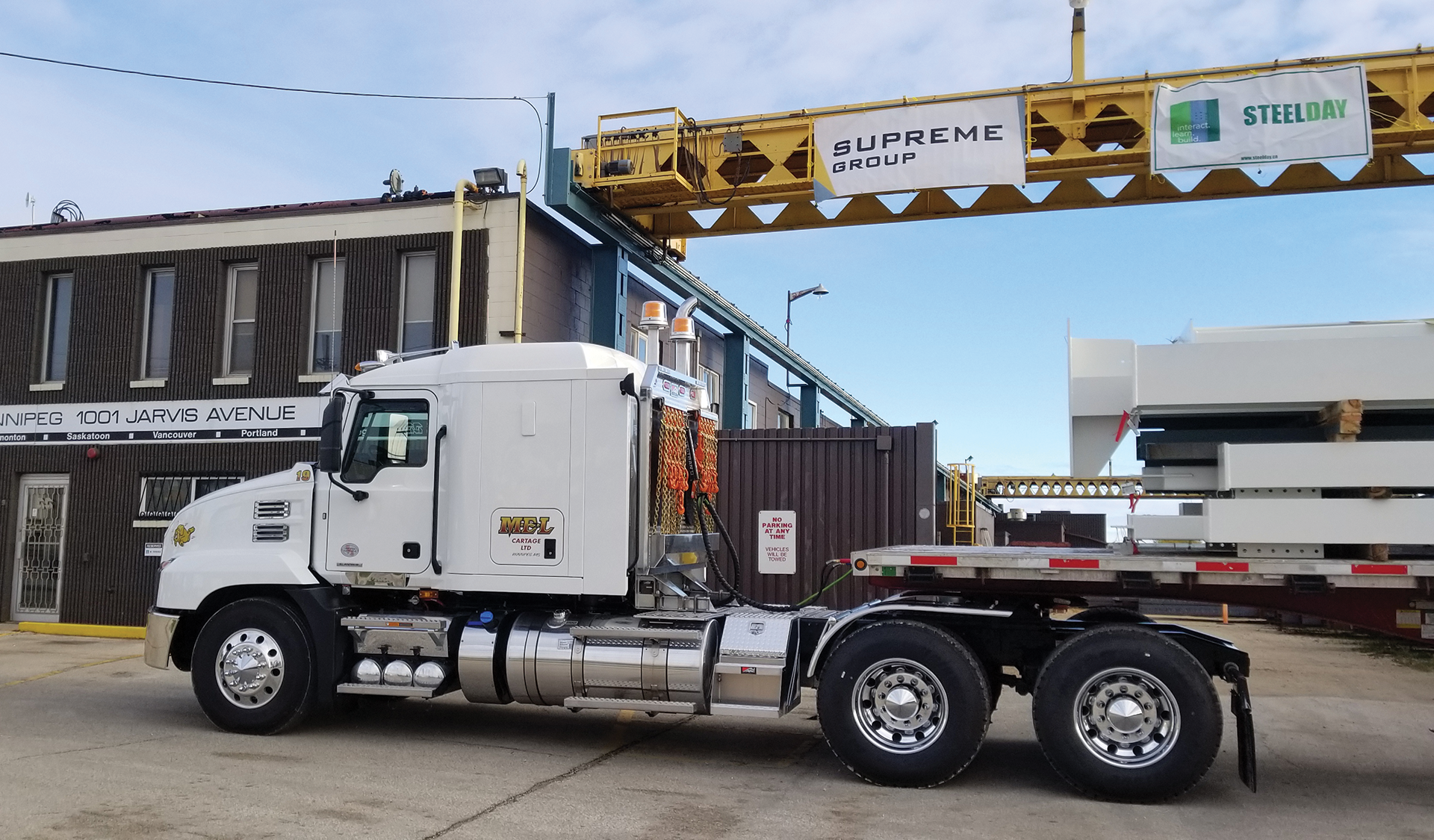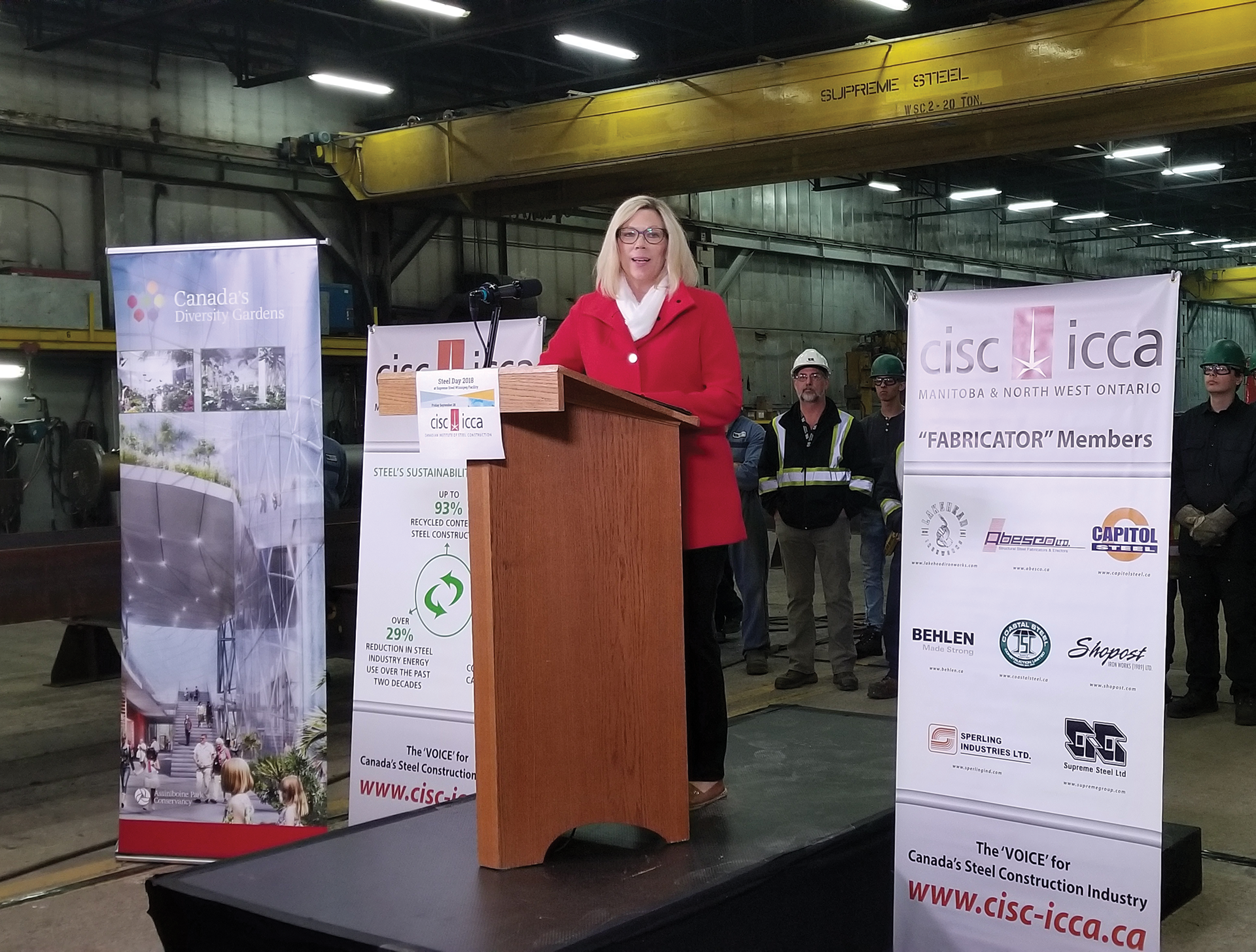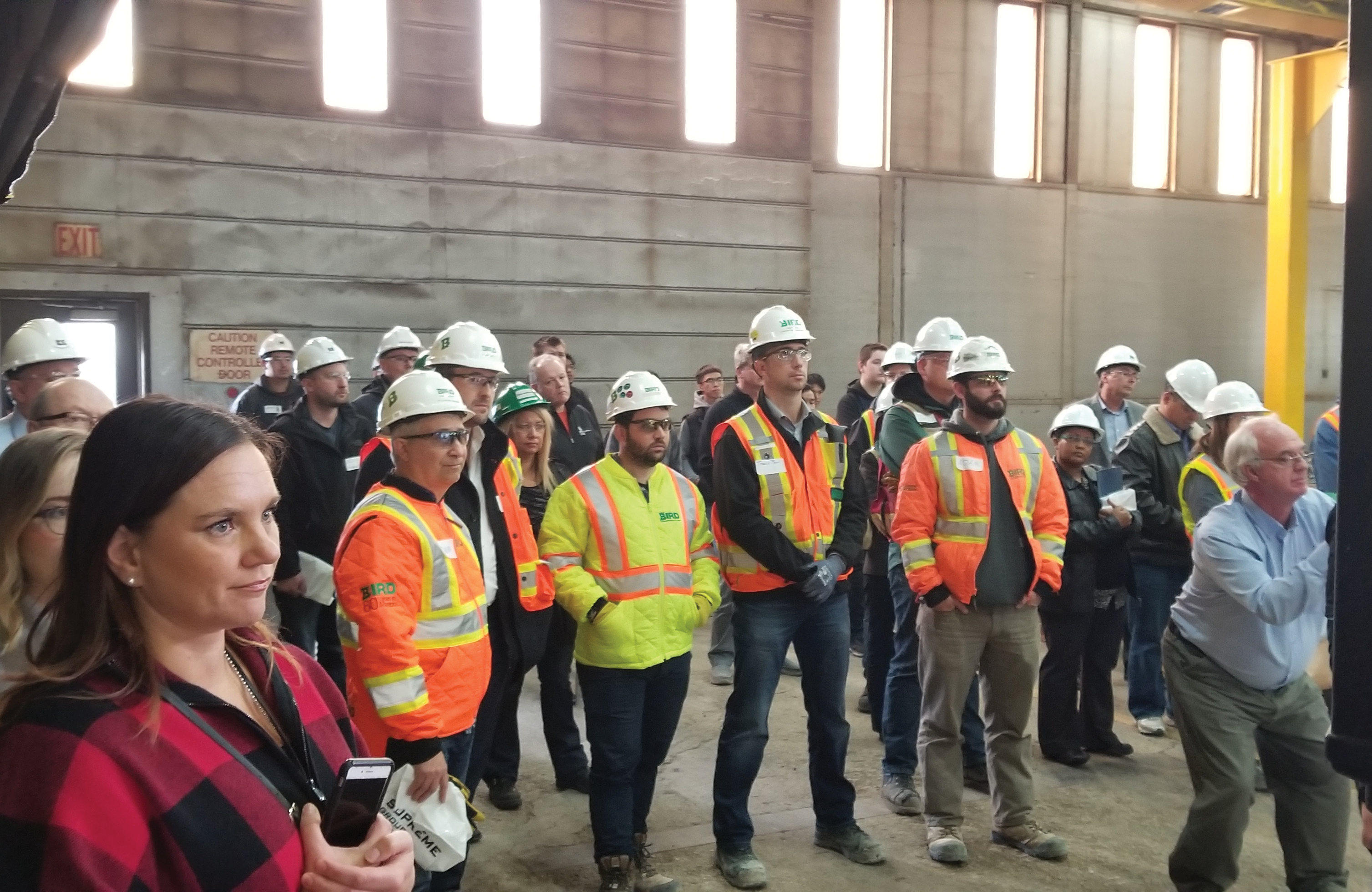By Lisa Kopochinski

For the past two decades, this annual national event has showcased the versatility, performance and sustainability of steel; in addition to its various innovative applications
Every fall, the Canadian Institute of Steel Construction (CISC) holds SteelDay, a day-long interactive and networking event for members of the design, construction and structural steel industry.
Across Canada, CISC members and associates open their doors to welcome industry professionals such as steel fabricators, architects, galvinizers, engineers, contractors, HSS producers, students, educators and the general public for a chance to get to know the steel industry through various tours, barbecues, demonstrations and other special presentations.
Formed 20 years ago in the late 1990s, SteelDay began as a joint effort between the three North American steel organizations in Canada, Mexico and the U.S. – CISC, Mexican Institute of Steel Construction (MISC) and the American Institute of Steel Construction (AISC).
With a mission to present the innovation in steel to as many people as possible in the industry – including engineers, architects, students, owners/developers, suppliers, general contractors, government employees, politicians and the general public – this year SteelDay was held September 28.
“The highlight this year was the opening of SteelDay by the Honourable Rochelle Squires, Minister of Sustainable Development, Province of Manitoba, at the Supreme Steel Winnipeg plant location,” said Gordie Tumlison, region representative, who represents Manitoba and Northwestern Ontario.
Main events
In the Manitoba/Northwestern Ontario region, four companies participated (two in Winnipeg and two in Thunder Bay) with more than 160 attending four events that included:
- Supreme Steel: This fabricator in Winnipeg had 95 attendees touring plants throughout the day.
- Brunswick Steel: This Winnipeg steel supplier hosted 41 attendees who reviewed each “value-added” process that the company is able to produce by going station to station, instructed by the machinery operator.
- Coastal Steel: This fabricator in Thunder Bay had 23 (mainly student) attendees go through the plant – many for the first time.
- Lakehead Ironworks: This Thunder Bay company hosted the balance of attendees who toured its recent facility additions.
Each event provided an opportunity to learn from industry experts about the advantages of using structural steel in construction such as:
Reducing risks with innovative and cost-effective building framing solutions.
Managing costs with lower labour and equipment requirements, lower foundation costs and lower ongoing building maintenance expenses.
Accelerating projects with off-site fabrication under controlled conditions that ensures a high-quality product with just-in-time delivery.
Maximizing revenues with earlier project completions and maximized use of floor space.
Collaborating with key partners in a fully integrated supply chain and reducing errors by using advanced technology at all stages of design and construction.
Building sustainably with construction materials that are among the most recycled on the planet. Steel has one of the highest recycled content rates and one of the lowest carbon footprints.
Facility tours
A highlight of SteelDay included the numerous tours that included the following:
Structural steel fabricators
Attendees on this tour learned about the processes that steel fabricators go through from receiving the steel to shipping steel to the jobsite. For example, attendees learned how off-site, controlled conditions ensure a consistently high-quality product and reduce or eliminate errors and fixes at the job site. They also witnessed how the steel industry has taken advantage of information technology (BIM) to streamline production and increased efficiency.
It is the fabricators who typically have the closest relationships with the design and contracting community and who will receive the steel contract from the general contractor. They then orchestrate the supply chain to fulfill the contract. There are approximately 2,500 fabricators in Canada, serving every corner of the nation.
Steel mills
During this tour, attendees learned about the steel-making process from start to finish and witnessed the making of steel – starting with mostly recycled material and ending with high-quality structural steel.
Steel mills directly produce wide-flange beams, channels, angles and plate. Every piece of steel is produced to conform to precise standards. Material strengths and dimensions are checked and verified several times before the material leaves the mill.
Today’s modern steel production mills are also metal recycling facilities with scrap metal now being the primary component in the manufacture of structural steel. Steel is North America’s number one recycled product. The recycled content of structural steel beams and columns averages approximately 93 per cent, with wide-flange beam production often having recycled content of more than 98 per cent, making structural steel the model of sustainable material production.
Steel service centres
On this tour, attendees learned how and why steel is distributed through service centres and how centres can help with their projects. In addition, the nationwide inventory of structural steel was highlighted.
Most structural steel (around 70 per cent) is supplied to fabricators directly by steel service centres. While domestic mills provide structural steel to the Canadian market, steel service centres are strategically located across the nation.
Steel service centres buy steel from each rolling cycle at every mill and keep it as inventory to sell to fabricators. They keep a full range of steel products in multiple lengths and also provide value-added services to fabricators such as first-stage, pre-fabrication processing (cutting beams to length, tee splitting, cambering, plate burning) and meeting staged delivery requirements.
HSS producers
Attendees saw first-hand the fascinating process of manufacturing hollow structural sections out of steel coil. They witnessed the incredible machinery and processes used to manufacture top-quality hollow structural sections (HSS) and learned about the differences between HSS and TS, or HSS and pipe, and know how to call them out appropriately.
Manufacturers of HSS produce square, rectangular and circular hollow structural sections out of flat steel plate using some of the most sophisticated and automated machinery in the industry.
In North America, HSS sections conform to the ASTM Specification A500 and Canadian Specification CAN/CSA-G40.20-04/G40.21-04. The use of HSS is growing with popularity all around the world in the building industry. While less than 15 per cent of the U.S. structural steel market, in Europe and Japan HSS members account for approximately 30 per cent of the market.
Bender-rollers
These are specialty subcontractors that focus on bending (or rolling) steel shapes according to the job specification. Bending steel is a specialized and skilled process and fabricators do not normally have the capability to do it themselves.
Precision instruments and expert benders are responsible for these increasingly popular architectural and structural elements. Attendees on this tour learned about the various methods of bending and rolling steel shapes and developing an understanding of these specialty sub-contractors and how they fit into the structural steel supply chain.
As such, benders receive the steel from the fabricator and then ship the curved steel back to the fabricator. Typical fabrication is still carried out through the main project fabricator who organizes the steel package from procurement through delivery to the site for erection.
Galvanizers
At a hot-dip galvanizing facility, attendees watched as fabricated steel was staged, cleaned, prepped and finally dipped into a kettle full of molten zinc to complete the galvanizing process. They learned about the hot-dip galvanizing (HDG) process – from staging material through each process until the steel is silver-gray and fully protected against corrosion.
HDG is the process whereby fabricated steel, structural steel, castings or small parts are immersed in a kettle or vat of molten zinc, resulting in a metallurgical bonded alloy coating that protects the steel from corrosion.
Steel is galvanized post-fabrication and generally en route to the project site. The galvanizing process consists of moving the steel through various baths. The first bath ensures the steel is free of grease, dirt and oil and following this it is neutralized, then it is dipped in an acid bath to remove any oxidation. To prevent further oxidation and prepare the steel for actual galvanizing, the steel goes through another chemical mixture before arriving at the zinc kettle.
Successful event
To sum up, SteelDay 2018 was a great success. While plans for 2019 have not yet been confirmed, Tumlison says they are hoping for more rural participation next year, such as Behlen Industries, a key rural fabricator CISC member.
“Networking is ultimately the key to successful businesses in any industry. Our members need to know the customers and our customers need to know us. We need top-notch suppliers and partnerships to develop trust and solid business ties. And CARM members need to know the people they hire or the people they work with – and for – are solid, community-minded professionals.”
Next load going out to the jobsite, on display

Minister Squires addresses the crowd in front with Bruce Keats, CEO, Assiniboine Park Conservancy. In the background is the Supreme Steel shop team.
I am text block. Click edit button to change this text. Lorem ipsum dolor sit amet, consectetur adipiscing elit. Ut elit tellus, luctus nec ullamcorper mattis, pulvinar dapibus leo.

Members of the assembled “tourist” crowd (Tec Voc High School welding students, Bird construction site managers, and other professionals from the industry and educators)




